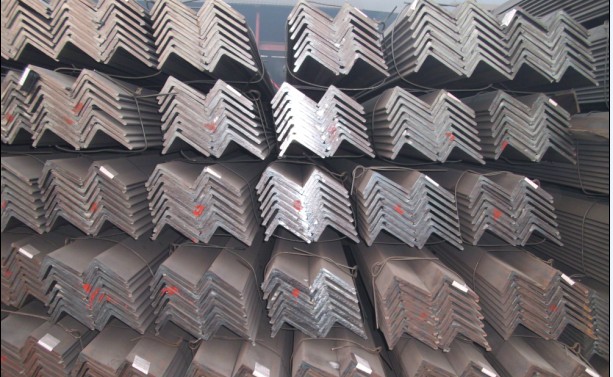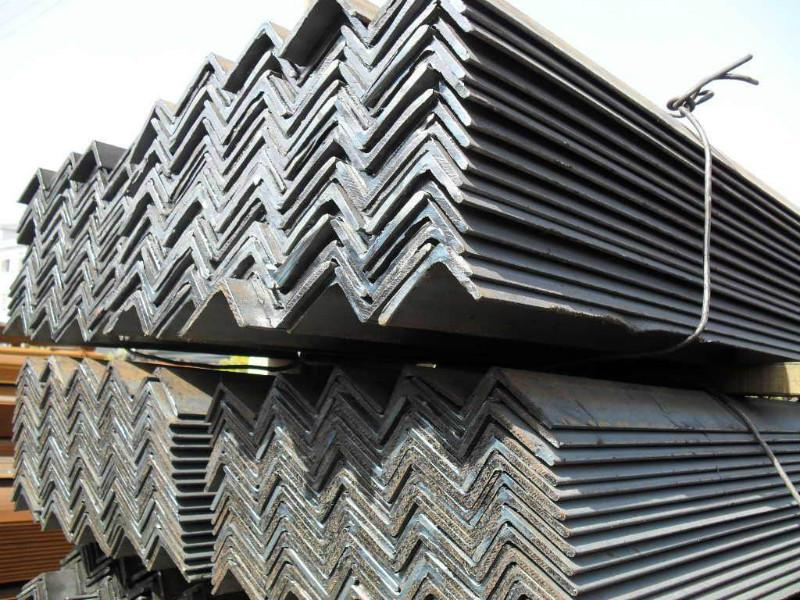MS equal/unequal black & galvanized steel angle bar with high quality
- Loading Port:
- Tianjin
- Payment Terms:
- TT OR LC
- Min Order Qty:
- 35 m.t.
- Supply Capability:
- 35000 m.t./month
OKorder Service Pledge
OKorder Financial Service
You Might Also Like
Specifications
Hot rolled carbon steel angle bar
Prompt delivery,Premium quality
Accept customized sizes
Accept client's LOGO



Mild steel angle bars OR Low content alloy angle bars | |
| Size | 25mm*25mm-250mm*250mm |
Wall thickness | 1.5mm-25mm |
Length | 1m-12m ,by customer’s requiremnts |
Internatioanal Standard | ISO 9001-2008 |
Standards |
ASTMA53/ASTM A573/ASTM A283/Gr.D/
BS1387-1985/
GB/T3091-2001,GB/T13793-92, ISO630/E235B/
JIS G3101/JIS G3131/JIS G3106/
|
Materials |
Q195,Q215,Q235B,Q345B,
S235JR/S235/S355JR/S355
SS440/SM400A/SM400B |
Product Category | Metallurgy,Mineral &Energy |
Technique | HOT ROLLED |
Packing | 1.Big OD:in bulk 2.Small OD:packed by steel strips 3.woven cloth with 7 slats 4.according to the requirements of customers |
Usage | Mechanical&manufacture,Steel strcuture, Shipbuilding,Bridging,Automobile chassis |
Main market | Middle East,Africa, Asia and some Uropean country and America , Australia |
Country of origin
| China |
Productivity | 15000 Metric Tons pet Month |
Remark | Payment terms :T/T ,L/C Terms of trade :FOB ,CFR,CIF ,DDP,EXW Minimum order : 10 tons Lead time :on or before 3-15 working days . |
Company information
| We, ShunYun Industrial located in PuTuo district,ShangHai city China. Our products are sold to all over the country and exported to more than 50 countries such as the EU,theUnitedStates,Australia,Southest, Asia,the Middle East,etc. We shall a good -will of credit quality and prompt delivery and hold the belief of "quality for improvement ,credit for developments and customer first".So that can offer clients advanced products and satisfied service. We sincerely would like to set up business relationship with clients from all over the world in long term business. We view credibility as life. |
Logo | ShunYun shipping mark or your company logo |
Another Name | angle steel bar ,angle steel , steel angle , mild steel angle ,carbon steel bars |
Surface processing | you can Galvanized,coated,or as your request |
Technical | Shanghai Shunyun Industrial |
you Can | Customized Sizes |
Contact information
| TEL: +86-021-62153163 FAX: +86-021-62152536 |
- Q:How do you cut steel angles?
- To cut steel angles, there are several methods you can use depending on the thickness and size of the angle. One common method is to use a metal cutting saw, such as a metal chop saw or a band saw. These saws are specifically designed to cut through metal and have the power and cutting capacity to handle steel angles. Before cutting, it is important to secure the steel angle firmly in place using clamps or a vice to prevent any movement during the cutting process. This will ensure accurate and clean cuts. It is also recommended to wear appropriate safety gear, including safety glasses and gloves, as cutting steel can produce sharp metal chips. If using a metal chop saw, you can adjust the angle on the saw to match the angle you need to cut. Make sure to set the blade speed and feed rate according to the manufacturer's recommendations for cutting steel. Slowly lower the blade onto the steel angle, applying steady pressure to achieve a smooth and precise cut. If a band saw is being used, ensure that the appropriate blade for cutting metal is installed. Adjust the blade tension and guide settings according to the manufacturer's instructions. Slowly feed the steel angle into the saw, maintaining a steady pace to achieve a clean cut. It is important to note that band saws may produce more heat during cutting, so periodically applying a coolant lubricant can help prevent overheating and extend the life of the blade. For thicker and larger steel angles, plasma cutting or oxy-fuel cutting methods can be utilized. These methods involve using high-temperature flames or a plasma arc to melt through the steel. However, they require specialized equipment and expertise to operate safely. Regardless of the cutting method used, it is crucial to measure and mark the desired cut line accurately before starting the cutting process. This will ensure that the steel angle is cut to the correct dimensions. Additionally, it is recommended to practice on scrap pieces of steel before attempting to cut the actual steel angle to gain familiarity with the cutting process and achieve the desired results.
- Q:What is the maximum length for a steel angle bracket?
- The maximum length for a steel angle bracket can vary depending on the specific design and manufacturer, but it generally ranges from 6 to 12 inches.
- Q:How do steel angles perform in extreme temperatures?
- Steel angles perform well in extreme temperatures due to their high strength and excellent heat resistance. They retain their structural integrity and do not easily deform or become brittle under extreme heat or cold conditions. This makes steel angles a reliable choice for various applications in industries such as construction, manufacturing, and engineering, where exposure to extreme temperatures is common.
- Q:Can steel angles be used in the construction of transmission line towers?
- Yes, steel angles can be used in the construction of transmission line towers. Steel angles are commonly used as structural members in tower construction due to their strength, durability, and cost-effectiveness. They provide stability and support to the tower structure, making them an ideal choice for transmission line tower construction.
- Q:What are the common methods of joining or connecting steel angles together?
- Common methods of joining or connecting steel angles together include welding, bolting, and using angle brackets or cleats.
- Q:What are the different standards and specifications for steel angles?
- There are several different standards and specifications for steel angles, including the American Society for Testing and Materials (ASTM) A36 and A572, the Society of Automotive Engineers (SAE) J429, and the European Union (EU) EN 10056. These standards outline the specific requirements for dimensions, chemical composition, mechanical properties, and tolerances of steel angles, ensuring consistency and quality in their production and use.
- Q:What does L50*4 angle mean in CAD?
- Angle called angle, the steel strip is perpendicular to each other on both sides into the corner. There are equal angles and unequal angles. The two sides of an equal angle steel are equal in width. The specifications are expressed in millimeters of edge width * edge width * edge thickness. Such as "30 x 30 x 3", that is 30 mm width equal angle, edge thickness of 3 mm.
- Q:How do steel angles behave under seismic forces?
- The behavior of steel angles under seismic forces varies depending on their design, size, and connection details. Generally, steel angles are commonly utilized in seismic-resistant structures because they can dissipate energy and withstand lateral forces. Here are several important characteristics regarding the behavior of steel angles under seismic forces: 1. Ductility: Steel angles possess a high level of ductility, allowing them to undergo significant deformations without failure. This characteristic is crucial in seismic design as it enables the structure to absorb and dissipate energy during an earthquake, thereby preventing sudden collapse. 2. Flexibility: Steel angles have the ability to flex and bend when subjected to seismic forces, which enables them to absorb energy and minimize the impact on the overall structure. This flexibility aids in distributing the seismic forces evenly throughout the structure, reducing localized damage. 3. Connection behavior: Proper connection design is vital to ensure the performance of steel angles under seismic forces. The connections must be designed to allow for rotation and accommodate the anticipated displacements during an earthquake. Adequate connections prevent the angles from becoming brittle or failing prematurely. 4. Buckling resistance: Steel angles are prone to buckling under compression forces. To enhance their resistance to buckling, lateral bracing or stiffeners are often utilized. These components offer additional support to the angles and help prevent buckling during seismic events. 5. Strength and stiffness: Steel angles possess high strength and stiffness, enabling them to withstand the lateral forces induced by an earthquake. The strength of steel angles can be enhanced by selecting appropriate materials, such as using higher-grade steel with greater yield strength. In conclusion, steel angles are well-suited for seismic-resistant structures due to their ductility, flexibility, and strength. However, their behavior under seismic forces is heavily dependent on proper design, connection details, and adherence to seismic codes and standards. It is crucial to consult with structural engineers and follow best practices to ensure the optimal performance of steel angles in seismic design.
- Q:What is the typical yield strength of steel angles?
- The yield strength of steel angles can differ depending on the grade and composition of the steel. However, for frequently utilized structural steel angles, the yield strength generally ranges from 36,000 to 50,000 psi (pounds per square inch). This yield strength indicates the level of stress or load that the steel angle can endure before experiencing permanent deformation. It is essential to acknowledge that various steel grades and sizes may possess distinct yield strengths, therefore it is advisable to consult the manufacturer or relevant standards for precise and specific information concerning the yield strength of steel angles.
- Q:Can steel angles be easily modified or customized on-site?
- Yes, steel angles can be easily modified or customized on-site. They can be cut, welded, drilled, and bent to meet specific requirements or to fit different angles and shapes. This flexibility allows for easy customization and adaptation during construction or fabrication processes.
1. Manufacturer Overview |
|
|---|---|
| Location | |
| Year Established | |
| Annual Output Value | |
| Main Markets | |
| Company Certifications | |
2. Manufacturer Certificates |
|
|---|---|
| a) Certification Name | |
| Range | |
| Reference | |
| Validity Period | |
3. Manufacturer Capability |
|
|---|---|
| a)Trade Capacity | |
| Nearest Port | |
| Export Percentage | |
| No.of Employees in Trade Department | |
| Language Spoken: | |
| b)Factory Information | |
| Factory Size: | |
| No. of Production Lines | |
| Contract Manufacturing | |
| Product Price Range | |
Send your message to us
MS equal/unequal black & galvanized steel angle bar with high quality
- Loading Port:
- Tianjin
- Payment Terms:
- TT OR LC
- Min Order Qty:
- 35 m.t.
- Supply Capability:
- 35000 m.t./month
OKorder Service Pledge
OKorder Financial Service
Similar products
New products
Hot products
Related keywords


























